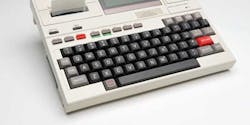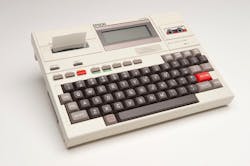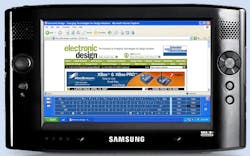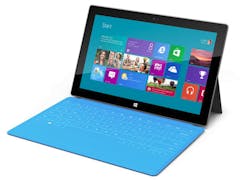The Tablet’s Evolution Will Continue Into 2013
January tends to be the time for forecasts. Sometimes, they’re paired with a look back to provide context for what lies ahead. This year is no different, as many pundits will have lots to say about the hot tablet market—including me (see “Tablets Eclipse The PC Market”).
The First Tablets
I’ve been involved in the computer and electronics industry for decades and have some of the relics to prove it, like Epson’s HX-20, circa 1981 (Fig. 1). I would consider it one of the first tablets given its portability and form factor. I had it when I was working with Rising Star Industries (RSI), which delivered Valdocs on another Epson platform, the QX-10.
The HX-20 had two 614-kHz Hitachi 6301 CPUs and a 120- by 32-pixel display. Its removable printer and microcasette storage system could accommodate other modules. At the time it was a remarkable system, although it was years before there was something else in the same form factor.
Skip forward to 2007, almost 30 years later, when I got my hands on a Samsung Q1B UMPC (Fig. 2). It ran a 1-GHz x86 processor and had a 7-in. 800- by 480-pixel LCD touch display that used a stylus (see “A Long Look At Samsung’s Q1B”). The unit also had a 40-Gbyte hard disk, and wireless support included Wi-Fi and Bluetooth. I used a Bluetooth keyboard with it.
I thought the Q1B was as great as the HX-20 when it arrived. I used both for years before the lack of new batteries moved them to my shelves. The HX-20’s sub-C nickel-cadmium (NiCd) pack would be the easiest to replace.
These platforms were the result of what was possible at the time rather than what the designers wanted to build. There has been some change in battery technology but nowhere near the magnitude of the changes in processing performance and storage. The processing improvements were forecast, but flash memory was more of a glimmer even in 2007.
It has only been about five years since the Q1B appeared, but the difference between it and even today’s lowliest tablet is amazing. Other major differences include motion sensors, cameras, and GPS. Even more remarkable is that all of this technology can fit into a handheld smart phone as well.
Tablets Going Forward
Tablets have taken over the PC revolution. They can be had for under $50, and the Pro version of Microsoft’s Surface starts at $899. Tablets will operate for a day with average use and a week with light use. They can play 1080p HD videos and even stream them via 4G or Wi-Fi. These days, there are fewer than four physical buttons on a tablet.
There is still a lot of variety, too. Tablets are available with covers that turn into keyboards (Fig. 3). Some tablets are even going back to styluses because some users find them easier for input than their fingers.
The big question is where tablets go from here. Display resolutions are starting to reach the limits of human eyesight. Processing cores are showing up like weeds, and we have almost hit the limits on the types of sensors that they can accomodate. Qualcomm’s Tricorder X Prize may eventually turn our tablets into Star Trek technology. For now, though, I’ll be using my Google Nexus 7 (see “Hands On Google’s Nexus 7 Tablet”).
About the Author
William G. Wong
Senior Content Director - Electronic Design and Microwaves & RF
I am Editor of Electronic Design focusing on embedded, software, and systems. As Senior Content Director, I also manage Microwaves & RF and I work with a great team of editors to provide engineers, programmers, developers and technical managers with interesting and useful articles and videos on a regular basis. Check out our free newsletters to see the latest content.
You can send press releases for new products for possible coverage on the website. I am also interested in receiving contributed articles for publishing on our website. Use our template and send to me along with a signed release form.
Check out my blog, AltEmbedded on Electronic Design, as well as his latest articles on this site that are listed below.
You can visit my social media via these links:
- AltEmbedded on Electronic Design
- Bill Wong on Facebook
- @AltEmbedded on Twitter
- Bill Wong on LinkedIn
I earned a Bachelor of Electrical Engineering at the Georgia Institute of Technology and a Masters in Computer Science from Rutgers University. I still do a bit of programming using everything from C and C++ to Rust and Ada/SPARK. I do a bit of PHP programming for Drupal websites. I have posted a few Drupal modules.
I still get a hand on software and electronic hardware. Some of this can be found on our Kit Close-Up video series. You can also see me on many of our TechXchange Talk videos. I am interested in a range of projects from robotics to artificial intelligence.




